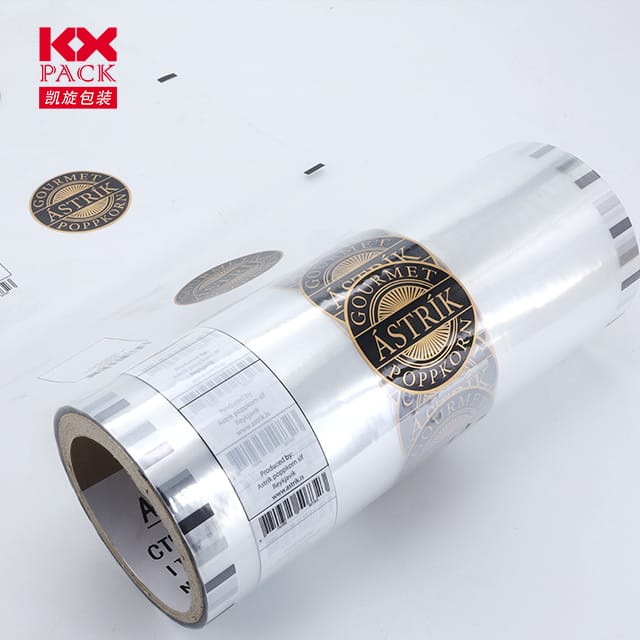Exploring the Versatility and Innovation of Sachet Film in Modern Packaging
Sachet Film
In the ever-evolving landscape of packaging solutions, sachet film has emerged as a cornerstone of convenience, functionality, and sustainability. From food and beverage industries to pharmaceuticals and cosmetics, sachet film has revolutionized the way products are packaged, distributed, and consumed. This blog post delves into the intricacies of sachet film, its applications, and the innovations driving its growth.
Understanding Sachet Film
Sachet , often made from materials like plastic or aluminum foil, is designed to create small, sealed containers holding a precise amount of product—typically enough for a single use. These sachets are not only lightweight and portable but also offer excellent barrier properties, protecting the contents from moisture, oxygen, and other environmental factors that could compromise quality.
One notable example of sachet film innovation comes from a patent (GB2180216A) filed in 1986, which describes a rectangular plastic film sachet sealed along its edges. This design includes a second seal parallel to one edge, allowing liquid to leave the sachet when the portion above the seal is torn off while keeping the remaining contents contained. This feature enhances user convenience and product integrity.
Applications Across Industries
Food and Beverage
In the food industry, sachet film is used extensively for packaging seasonings, condiments, and even single-serve beverages. For instance, instant coffee packaging often utilizes sachet film to preserve freshness and flavor, ensuring that each sachet delivers a consistent taste experience. The film’s ability to form a hermetic seal prevents moisture and air ingress, extending the product’s shelf life.
Pharmaceuticals
Pharmaceutical companies leverage sachet film for packaging medications, supplements, and diagnostic reagents. The film’s barrier properties protect sensitive ingredients from degradation, while its tear-off design facilitates easy access to the contents. A notable example is the packaging of azithromycin, where studies have shown that food does not affect its bioavailability when administered in sachet form, ensuring consistent efficacy.
Cosmetics and Personal Care
In the beauty industry, sachet film is used for sampling and traveling-size products. Face creams, shampoos, and lotions are often packaged in sachets, allowing consumers to try new products without committing to full-size purchases. The film’s flexibility and printability also enable branding opportunities, enhancing product appeal.
Innovations in Sachet Film Technology
Sustainability and Eco-Friendly Materials
As environmental concerns grow, manufacturers are exploring biodegradable and compostable sachet films. These innovations aim to reduce plastic waste and align with global sustainability goals. For example, some sachet films now incorporate plant-based materials, offering a greener alternative to traditional plastics.
Enhanced Barrier Properties
Advancements in film technology have led to sachet films with improved barrier properties against moisture, oxygen, and light. This is crucial for products sensitive to environmental factors, such as pharmaceuticals and certain food items. Multilayer films, combining materials like PET, VMPET, and PE, provide robust protection while maintaining flexibility and printability.
Customization and Printability
Sachet now offer extensive customization options, including various sizes, colors, and printing capabilities. Gravure printing, for instance, allows for high-resolution graphics and text, enabling brands to create visually appealing packaging that stands out on shelves. This customization not only enhances brand recognition but also provides valuable product information to consumers.
Convenience Features
Innovations in sachet design have also focused on improving user convenience. Features like easy-tear notches, resealable closures, and stand-up pouches make sachets more user-friendly. For example, some sachets include a second seal parallel to one edge, allowing liquid to leave the sachet when the portion above the seal is torn off while keeping the remaining contents contained.
Case Studies: Sachet Film in Action
Instant Coffee Packaging
A leading coffee brand adopted sachet film for its instant coffee line, utilizing PET/VMPET/PE multilayer film with gravure printing. The sachets not only preserved the coffee’s freshness but also featured vibrant branding that appealed to consumers. The result was a significant increase in sales, driven by the convenience and portability of the sachets.
Pharmaceutical Sampling
A pharmaceutical company used sachet to package sample doses of a new medication. The sachets were easy to distribute at medical conferences and allowed healthcare professionals to try the product without opening full-size packaging. This strategy led to increased product awareness and adoption.
Cosmetic Sampling
A beauty brand introduced sachet for sampling its new face cream. The sachets were included in magazines and given away at events, allowing consumers to experience the product’s benefits firsthand. The positive feedback from samplers translated into higher full-size product sales.
Future Trends in Sachet Film
The future of sachet film looks promising, with ongoing innovations focusing on sustainability, functionality, and user experience. Biodegradable materials, smart packaging with sensors, and interactive packaging elements are just a few of the trends shaping the industry. As consumer preferences continue to evolve, sachet film will remain at the forefront of packaging solutions, offering convenience, protection, and sustainability.
In conclusion, sachet film has transformed the packaging landscape, offering versatile solutions across various industries. Its ability to preserve product integrity, enhance branding, and improve user convenience makes it an indispensable tool in modern packaging. As technology advances, sachet film will continue to evolve, driving innovation and meeting the ever-changing needs of consumers and businesses alike.






